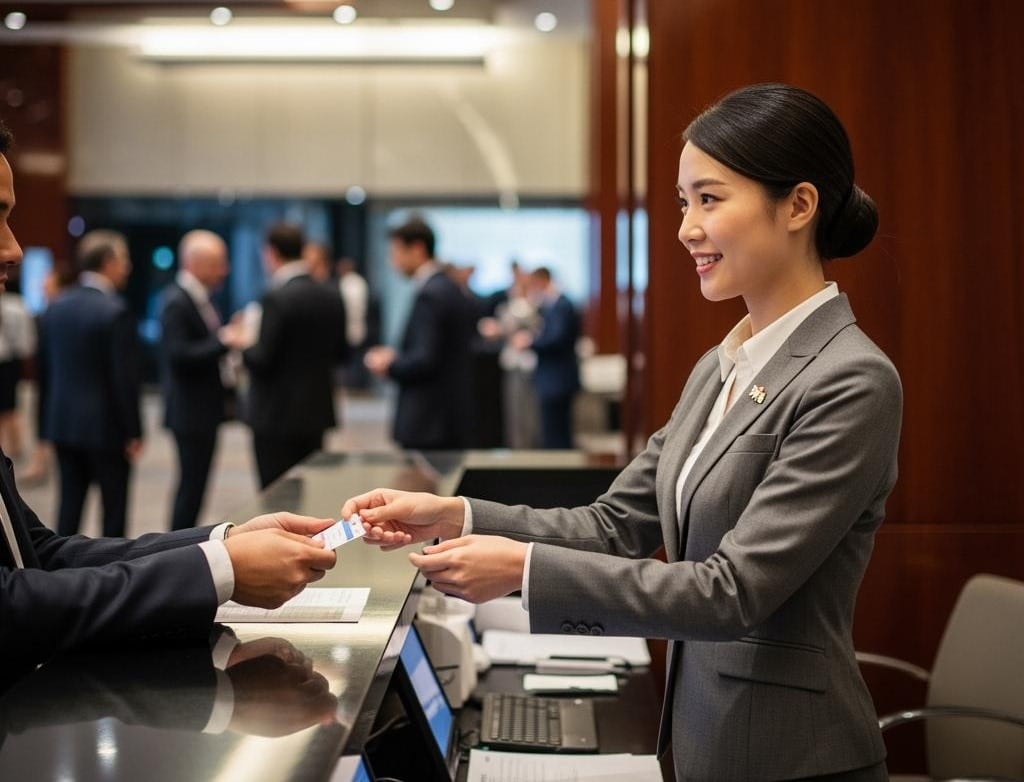In today’s data-driven event landscape, GDPR compliance is not just a legal obligation – it’s a cornerstone of attendee trust. For event organizers using management and check-in apps, ensuring GDPR adherence is critical, especially when handling high-profile events with sensitive attendee data. This playbook outlines key steps to stay compliant while delivering seamless, secure experiences.
Why GDPR Matters for Events in 2025-2026
GDPR (General Data Protection Regulation) governs how personal data is collected, stored, and shared for EU/EEA residents—even if your event is hosted outside the EU. Non-compliance can result in hefty fines and reputational damage. Key risks include:
-
Unauthorized data sharing (e.g., with sponsors without explicit consent)
-
Insecure data storage (e.g., unencrypted attendee details in check-in apps)
-
Lack of transparency (e.g., unclear privacy policies or cookie tracking)
7-Step GDPR Compliance Framework for Events
1. Obtain Clear, Explicit Consent
-
Use unticked opt-in boxes for marketing communications and third-party data sharing (e.g., sponsors)
-
Provide granular choices (e.g., separate consents for email follow-ups vs. badge scanning)
-
Ensure consent is easy to withdraw post-event (e.g., via attendee portals)
2. Minimize Data Collection
-
Only request essential data (e.g., avoid unnecessary fields like job titles unless critical)
-
Implement data retention policies (e.g., auto-delete attendee data after 12 months)
-
Ensure your event software allows complete data purging (full event deletion for individual guest records)
3. Secure Data Storage & Processing
-
Use encrypted platforms (e.g., AES-256 encryption for check-in apps and databases)
-
Sign Data Processing Agreements (DPAs) with vendors (badge printers, event agencies, AV suppliers)
-
Verify data is removed from all systems including backups when deleted
4. Ensure Transparency
-
Display privacy notices at registration, explaining:
-
What data is collected (e.g., name, email, dietary requirements)
-
How it’s used (e.g., personalized agendas, post-event surveys)
-
Third-party sharing (e.g., sponsors)
-
5. Prepare for Data Subject Requests
-
Enable attendees to:
-
Request their data (via dedicated support contact)
-
Request deletion (“right to be forgotten”)
-
Correct inaccuracies (e.g., misspelled names)
-
-
Provide clear contact information (e.g., privacy@yourcompany.com) for GDPR requests
6. Have a Breach Response Plan
While major breaches are rare, prepare a practical protocol:
-
Immediate actions:
-
Contact your event software provider to:
-
Revoke team member access instantly
-
Force logout of compromised devices
-
Block user accounts if credentials are exposed
-
-
For lost devices: Remote wipe check-in apps containing guest lists
-
-
Documentation:
-
Maintain a simple incident log
-
Note affected individuals and measures taken
-
7. Choose Event Software with Robust Security Architecture
Ensure your provider has:
-
Tenant-specific KMS key isolation: Dedicated encryption keys per organizer
-
Zero data mingling: Complete separation of attendee databases
-
Certified infrastructure: ISO 27001 or SOC 2 compliant data centers
This enterprise-grade approach offers:
✔ Military-grade breach containment – Isolates risks to individual events
✔ Future-proof auditing – Clear cryptographic boundaries for compliance
✔ Competitive advantage – Demonstrates premium data care to attendees
Event Emails vs. Marketing Emails: Staying Compliant
A key GDPR requirement is distinguishing between event-related communications (transactional) and marketing emails (promotional):
Transactional Event Emails (Allowed Without Explicit Opt-In)
-
Invitations (for genuine prospects/existing clients)
-
Confirmations & tickets
-
Reminders & updates
-
Post-event follow-ups
Best Practices:
-
Only invite guests with legitimate interest
-
Include unsubscribe options in all emails
Marketing Emails (Require Explicit Opt-In)
-
Newsletters about future events
-
Promotional offers from sponsors
-
Cross-selling other services
Best Practices:
-
Use double opt-in for marketing lists
-
Clearly separate from event logistics
Key Takeaways
-
Consent is king: Always use opt-in, not pre-checked boxes
-
Less is more: Collect only what you need
-
Security is non-negotiable: Encrypt data and vet vendors
-
Distinguish transactional vs. marketing emails
-
Architecture matters: Prioritize tenant-isolated encryption
-
Trust builds loyalty: Transparent practices enhance attendee satisfaction
By embedding GDPR compliance into your event strategy, you not only avoid penalties but also foster long-term attendee trust, a competitive edge in 2025-2026’s privacy-conscious world.
Need a deeper dive? Contact us to learn about our GDPR-compliant event solutions.
Disclaimer: This post is for informational purposes only. Consult legal experts for specific compliance advice.



